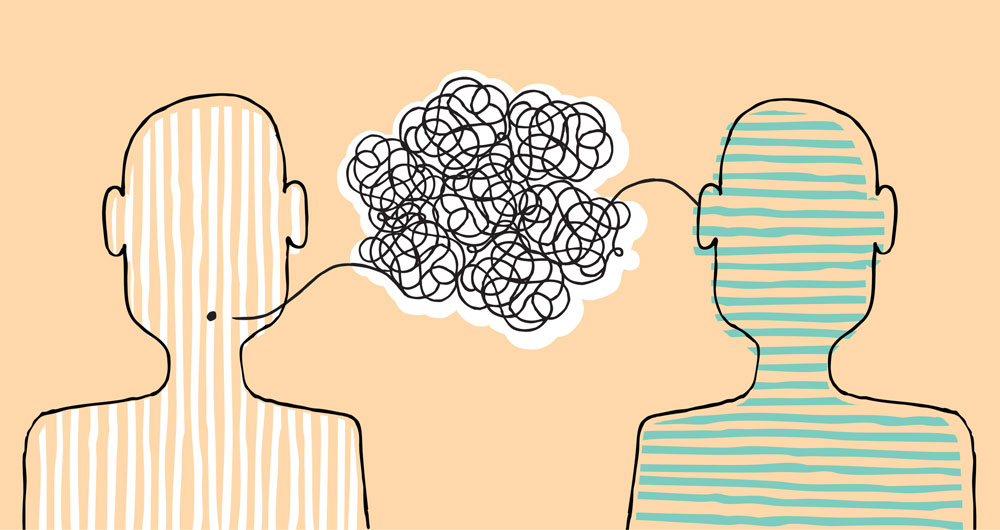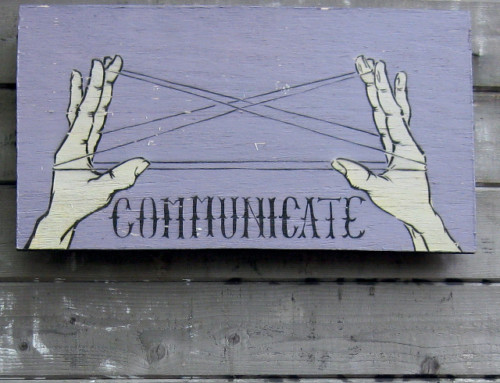For those wondering what the right thing to say is, warning: you might not get it right the first time. And that’s okay. Few people say exactly what they mean on their first try. Open Communication is about ongoing inter-action, and the first step is getting the conversation started. Numerous insidious patterns evolve when the lines of communication become perpetually blocked. Pursue-Withdraw is one of the most common patterns of communication blocks I see among couples. In this blog, I explore some of the underpinnings driving the Pursue-Withdraw communication patter, and I discuss open communication as a solution to finding balance in committed relationships.
Let’s have a closer look at the pursuit-withdrawal pattern. I would describe it as one partner pushing for connection with the other, the other withdrawing for personal space; and as the pursuing partner escalates in desperation to connect, the withdrawing partner only further shuts down.

“Men don’t share” This is not always the case. But as a society, we don’t nurture boys to connect with their feelings or empathize with others. Instead, a culture celebrating masculinity and machismo teaches boys stoicism and the “strong silent type,” which becomes a problem when it comes to opening up with another on an intimate level. Intimate sharing requires vulnerability, and masculinity has a problem with vulnerability and weakness. This is how many men find themselves in the withdrawn position.
More generally, people take the withdrawal position for many reasons, including uncertainty with their own point of view or how to get it across, a need for greater separate space/privacy, discomfort with intimacy, shame, shyness, fear of conflict and conflict avoidance… to name a few. On the other hand, the person in the pursuit position also has various motivations, including a desire to connect at a deeper level, seeking reassurance of their attachment or a need to feel loved, fear of separation, discomfort with distance in a relationship, loneliness… as examples. In any case, the harder the pursuer pushes, the more overwhelmed or smothered the withdrawn feels.
Intimacy vs. Individuality
I’d like to make a distinction between two angles individuals may be working from. As humans, we all develop a balance of individuality and intimacy. We must first have comfort, love, and understanding for our Self before developing a deep intimate connection. Deep intimacy will require exposing that Self, and most of us need a sense of security within ourselves before we’ll feel any good doing this. Without security with our Self, numerous unhealthy relationship patterns could emerge (e.g., power imbalances, communication problems, contempt & resentment). Everyone develops their own comfort levels with individuality and intimacy. For the withdrawn, discomfort with intimacy may be part of their pursuit for individuality/separateness; and for the one in pursuit, fear of being alone may drive a yearning for intimacy/connection.
Suggestion
I think one solution fits within two ends of a spectrum. On one end of the spectrum, the withdrawn shows more self-exposure and takes the risk of connecting on a more vulnerable level; on the other end, the pursuer allows the other (i.e., the withdrawn) more space for themselves and makes peace with greater distance in the relationship. Negotiating a mutual solution may mean an integration of these two – meet in the middle.
The first option requires the withdrawn to risk the very feelings they protect by staying withdrawn. For many, these are feelings of embarrassment, shame, fear (e.g., of conflict, judgement, losing partner’s love), or discomfort with intimacy and feeling smothered.
The second option involves the pursuer respecting the other’s need for greater space, accepting that your expectations of your partner may not get fulfilled. Often the release of pressure for the withdrawn to interact can be the invitation they needed to come forward more. However, this isn’t to suggest that an “indirect strategy” can trick the withdrawn into connecting. The pursuer shouldn’t step back with the expectation that the withdrawn will eventually come around. Stepping back is about making peace with a different level of connection than your relationship script had scribed.
Ultimately, couples need to get into the open the needs they have for themselves and for their happiness in relationship (i.e., individuality and intimacy). Being assertive and forward with our needs is what makes healthy relationships grow. Openness and honesty can help both the withdrawn and the pursuer communicate their needs. This shows respect for your own needs, as well as for the relationship. This also avoids indirect or passive communication, which seldom gets the message across. While for some, reflecting on your feelings may seem foreign and may feel risky, it is a necessary part of sharing your world with your partner, the whole point of intimacy. Chances are, if you take a risky step to share, your partner will follow.
For further reading:
Randi Gunther PhD on rediscovering love https://www.psychologytoday.com/blog/rediscovering-love/201212/how-intimate-relationships-fail-0



